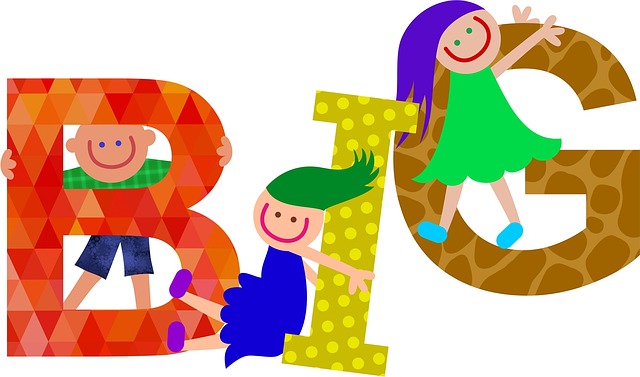
“Sight words” are not just “little words”
Attention! This post has moved.
It can now be found at: https://www.breakingthecode.com/sight-words-arent-just-little-words/

Attention! This post has moved.
It can now be found at: https://www.breakingthecode.com/sight-words-arent-just-little-words/

In discussions about reading instruction, a commonly raised point is that students with reading disabilities—particularly dyslexia—suffer disproportionately when deprived of systematic instruction in phonics. In fact, this is virtually impossible to dispute—whereas many students in whole language classrooms do manage to figure out enough of the rules to become reasonably proficient readers, students who cannot make sense out of word/sound relationships have no way of keeping up. And if their difficulties are not noticed in time, or they lack access to competent reading specialists, either through their schools or privately, the consequences can indeed be extremely dire. (The percent of prison inmates with reading disabilities is, for example, astronomical.)
I’m saying this upfront because I do not want in any way to minimize the difficulties faced by these students and their parents. But what I’m interested in examining here is how some of the rhetoric surrounding reading pedagogy operates—how concepts like “normal” and “abnormal” are defined and how, in some cases, the recognition of the importance of phonics for students with reading disabilities like dyslexia can become a tool for reinforcing naturalistic ideas about reading.
According to one narrative I find particularly pernicious, a phonetic approach to teaching reading is acknowledged as acceptable, but only for children with reading disabilities; for “normal” children, it is implied, exposure to high-quality literature and participation in enjoyable activities that foster a love of reading are by themselves sufficient for reading (that is, decoding) to be learned automatically.
Incidentally, I was already planning to write this post when, by pure chance, a perfect specimen of this viewpoint appeared (as if by magic!) in my inbox, courtesy of Diane Ravitch’s blog.
In the course of a post about the insanity of subjecting kindergartners to standardized reading tests—a stance that, for the record, I agree with 100%—Ravitch cites Nancy Bailey, a former special-education teacher and Ph.D. in educational leadership, on the ways in which children learn to read. As Bailey describes:
Some children easily acquire reading skills without formal phonics instruction. They are curious about words and are able to sound letters out as they listen to and enjoy picture books. They may read well before they start school.“
Other children learn a little later. And some with disabilities may need extra assistance with a formal phonics program.
“Repeatedly testing young children to find out how they read at such an early age would be better spent reading out loud lovely, funny, engaging picture books, and letting children develop their language skills through play!”
What interests me in this passage is the way Bailey contrasts the needs of students with and without reading disabilities. Consider the phrasing: “Some children easily acquire reading skills without formal instruction.” Yes, this is true, although it only applies to a very small percentage. (Another 35% will learn to read with broad instruction.)
What Bailey says next is where things get problematic: “Other children learn a little later. And some with disabilities may need extra assistance with a formal phonics program.”
Look carefully at how this is phrased: not “other children need varying amounts of direct instruction to learn to read,” but “other children learn to read later.” Taken on its own (and in the absence of any pre-existing knowledge about Bailey’s stance on whole language), this could charitably be written off as an unintentional omission, but it is the next statement that gives the game away. By juxtaposing “other,” non-learning-disabled children and those “with disabilities, who may need extra assistance with a formal phonics program,” Bailey clearly implies that “normal” children will learn to read more slowly than children in the most exceptional group—but that they do not need formal phonics in order to acquire that skill. And that is simply not true.
Furthermore, the use of the word may suggests that even in cases where a learning disability is present, a phonetic approach is only one of many possible options. Are there other ways in which a dyslexic student might learn to read? Theoretically, yes—in the absolute sense, anything is possible. And presumably a very small percentage of students will continue to struggle despite receive intensive phonics instruction. But phonics is the only solution demonstrated to be consistently effective for students who struggle with decoding—to the best of my knowledge, there is no accepted mainstream research suggesting anything to the contrary. (And again, parents don’t pay for their children who are struggling with reading to go to whole language centers.) In light of Bailey’s other remarks, her wording here seems to imply that given enough time, some students with genuine reading disabilities will eventually just pick up the whole reading thing on their own, no intervention needed. Again, theoretically possible, but in reality… the result will probably be years of frustration.
Reading between the lines here, it is possible to catch of whiff of something vaguely… if not exactly condescending, then perhaps slightly pitying. The poor dears… They can’t learn to love reading naturally, through fun activities, like their peers. No, they need to sit with workbooks (the horror!) doing those terrible, awful, boring rote drills that won’t teach them to love reading at all.
Consider now the broader assumptions lurking behind this perspective. Phonics can be written off as something that “other,” disordered children need. Normal people do not need to learn in a structured, sequential way, or to have concepts carefully and explicitly broken down for them. Given the right environment and right set of attitudes, they just… catch it. Like magic.
Furthermore, framing the problem in these terms allows the problem to be placed squarely on the students’ shoulders. Teachers need not question their own methods because a student who fails to learn naturally must be deficient in some way and can be passed off to a trained expert, thus preserving the status quo.
What makes this such a seductive fantasy is that children without obvious learning disabilities may in fact appear to do just fine in whole-language classrooms. The words they are asked to read are mostly simple and straightforward, and they can get pretty far on memorization—particularly if no one bothers to probe their true level of understanding or has an active interest in not assessing it. (In light of many teachers’ visceral loathing of memorization, I actually find this very bizarre.) But once reading becomes more challenging—once the books no longer have pictures, and the terms are too technical to be figured out without context clues—things start to fall apart.
Richard McManus at the Fluency Factory mentioned to me recently that he sees a lot of kids who seemed okay in elementary school but are about to run headlong into a huge amount of trouble in middle school because they just can’t compensate anymore. But by then, the damage has started to accumulate. With solid instruction, students may be able to scramble back up to grade level; without it, they fall increasingly behind.
Then there are the students who continue to manage to keep skating by through the first couple of years of high school; for many of these students, a low (P)SAT or ACT score is the first real sign that something is amiss, particularly if they spend most of their in-class time doing groupwork and have grades based more on projects and class participation than on tests or papers (or if grades at their school are exceptionally inflated; or if they rely heavily on tutors for help with schoolwork, as was the case for several of my students; or if their parents call to protest every time they receive anything lower than an A-…). Unfortunately, by that point it is exceedingly difficult to play catch-up. These were among the students I saw, the ones who read in ways so disorganized that at first I could barely wrap my head around it. Without exception, they were unable to score above the high 500s in Reading on the (old) SAT or the low-mid-20s on the ACT, regardless of how much tutoring their received.
I suspect that the proliferation of students in this category also contributed to the longterm decline in SAT reading scores, and thus to the recent elimination of the vocabulary portion of the SAT. A decent percentage of the words tested could be figured out—or at least reasonably guessed at—based on their component parts (roots, prefixes, suffixes). Indeed, that was in large part the point of the test! But students who learn to read through whole language, particularly if they attend schools that do not emphasize systematic vocabulary development in the later grades, are ill-prepared to break down words that way (although if they’re lucky, they might pick up something from foreign-language class).
A striking number of my students could not distinguish between “looks/sounds like” and “is related to,” for example assuming that defer meant something like differ because the two were pronounced similarly (I saw that one on multiple occasions). At the extreme end, they might not even really notice the difference in appearance between the two—or at least not register the difference in vowels as having any particular significance for their meaning. As a result, it was impossible to help them approach what was essentially a logic test in a logical manner.
Perversely, then, the practice of treating phonics as something reserved for students with reading disorders has the inadvertent effect of making better decoders out of students diagnosed with learning disabilities (they’re the ones who get the intervention), and with producing reading disorders in students who would not otherwise have them. And even if students do not have outright reading disabilities, they may become far weaker readers than necessary.
And perhaps the biggest irony of all: no matter how joyful their early experiences, students who have difficulty reading do not like to read—once the words get hard, those six-year-olds who were oh-so-excited to participate in “literacy-building” activities suddenly get a lot less enthusiastic. A student who consistently misreads words will find it difficult to figure out just what is going on in many texts, and/or may actively misinterpret their literal meanings (often, as I observed, in ways that do not make sense). Furthermore, if they are expending too much mental energy just trying to figure out what the words say, there will be no room left over to think about the meaning.
Who could possibly enjoy such a frustrating activity?
Who would want to engage in it at all?